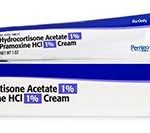
Contents
Vasculitis
Vasculitis is a group of rare diseases characterized by inflammation of blood vessels.
The body’s circulatory system consists of arteries that carry blood from the heart to the organs and veins that return blood to the heart.
Vasculitis occurs when the blood vessel walls become inflamed, resulting in swelling and damage caused by the invasion of white blood cells.
Vasculitis can be a primary disease or a secondary condition related to another underlying illness.
In severe cases, it can lead to bleeding and narrowing of the blood vessels, reducing blood flow to affected organs.
Causes of Vasculitis
The cause of vasculitis is often unknown and can occur independently or be associated with other conditions or diseases.
Common features of vasculitis include abnormal immune system function and inflammation of blood vessels. The symptoms experienced depend on the specific organs affected.
Risk factors for developing vasculitis may include age, genetics, ethnicity, gender, certain lifestyle habits (such as smoking or illegal drug use), and certain medications or underlying diseases.
QUESTION
Types of Vasculitis
Vasculitis is classified based on the size and extent of blood vessel involvement. The European Alliance of Associations for Rheumatology and the American College of Rheumatology have published updated classification criteria in 2022.
Primary non-infectious vasculitis includes large vessel vasculitis, antineutrophil cytoplasmic antibody (ANCA)-associated vasculitis, immune complex small vessel vasculitis, Bechet syndrome, and Cogan syndrome.
Secondary vasculitis is localized to a single organ but may later spread to other body parts.
Systemic lupus erythematosus and rheumatoid arthritis can also cause inflammation that affects blood vessels.
Symptoms of Vasculitis
Vasculitis symptoms vary depending on the organs affected and the severity of the condition.
Common symptoms include fatigue, malaise, weakness, weight loss, and specific organ-related complaints.
Diagnosis of Vasculitis
Diagnosing vasculitis can be challenging due to its diverse manifestations. Healthcare providers must carefully consider the possibility of vasculitis and conduct appropriate tests to confirm the diagnosis.
Blood tests may show signs of inflammation, and additional screening tests may be necessary. Tissue biopsies and imaging techniques like ultrasound, CT scans, and MRI scans with angiography can also assist in evaluation.
Treatment of Vasculitis
Treatment for vasculitis focuses on reducing inflammation, providing support for affected organs, and preventing recurrence.
The first phase of treatment involves aggressively controlling inflammation with corticosteroids. Additional medications may be prescribed depending on the specific disease.
Maintenance medications can be prescribed to prevent flare-ups. However, their use should be closely monitored due to potential side effects.
Long-term treatment and monitoring are typically necessary for vasculitis patients.
Medications for Vasculitis
Corticosteroids are commonly used to treat inflammation associated with vasculitis. Other medications such as cyclophosphamide, methotrexate, and rituximab may be considered depending on the underlying diagnosis.
By clicking Submit, I agree to the MedicineNet’s Terms & Conditions & Privacy Policy and understand that I may opt out of MedicineNet’s subscriptions at any time.
Complications of Vasculitis
Vasculitis can affect various organs, potentially leading to organ failure. Complications may include heart, lung, kidney, and liver failure; peripheral nerve involvement; skin bleeding and ulceration; and gastrointestinal problems.
Prognosis of Vasculitis
The prognosis for vasculitis varies depending on the specific type and organ involvement. Some diseases are aggressive, while others can be managed with medication. It is important to note that certain medications used for treatment may have significant side effects.
Preventing Vasculitis
As the cause of vasculitis is unknown and prevention is not always possible, individuals can reduce their risk by adopting a heart-healthy lifestyle, avoiding smoking and illegal drug use, and considering medications like anticoagulants, beta blockers, and statins.
From
Autoimmune Disease Resources
- Advancements in Treating Psoriatic Arthritis
- 9 Ways to Stay Healthy With B-Cell Therapy
- Saving Spoons: Your Daily Routine With RRMS
Featured Centers
- What Are the Best PsA Treatments for You?
- Understanding Biologics
- 10 Things People With Depression Wish You Knew
Robson JC, Grayson PC, et al. DCVAS Investigators. 2022 American College of Rheumatology/European Alliance of Associations for Rheumatology classification criteria for granulomatosis with polyangiitis. Ann Rheum Dis. 2022.81(3):315-320.
Ponte C, Grayson PC, et al. DCVAS Study Group. 2022 American College of Rheumatology/EULAR classification criteria for giant cell arteritis. Ann Rheum Dis. 2022 81(12):1647-1653.
Suppiah R, Robson JC, et al. DCVAS Study Group. 2022 American College of Rheumatology/European Alliance of Associations for Rheumatology Classification Criteria for Microscopic Polyangiitis. Arthritis Rheumatol. 2022. 74(3):400-406
Grayson PC, Ponte C, et al. DCVAS Study Group. 2022 American College of Rheumatology/EULAR classification criteria for Takayasu arteritis. Ann Rheum Dis. 2022. 81(12):1654-1660.


